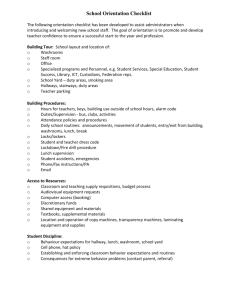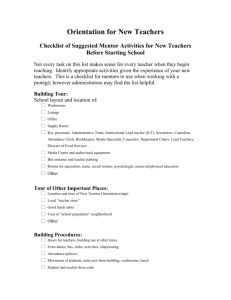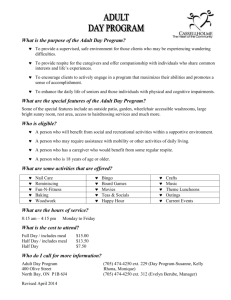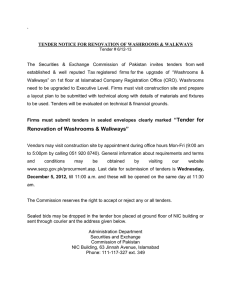Washrooms
advertisement
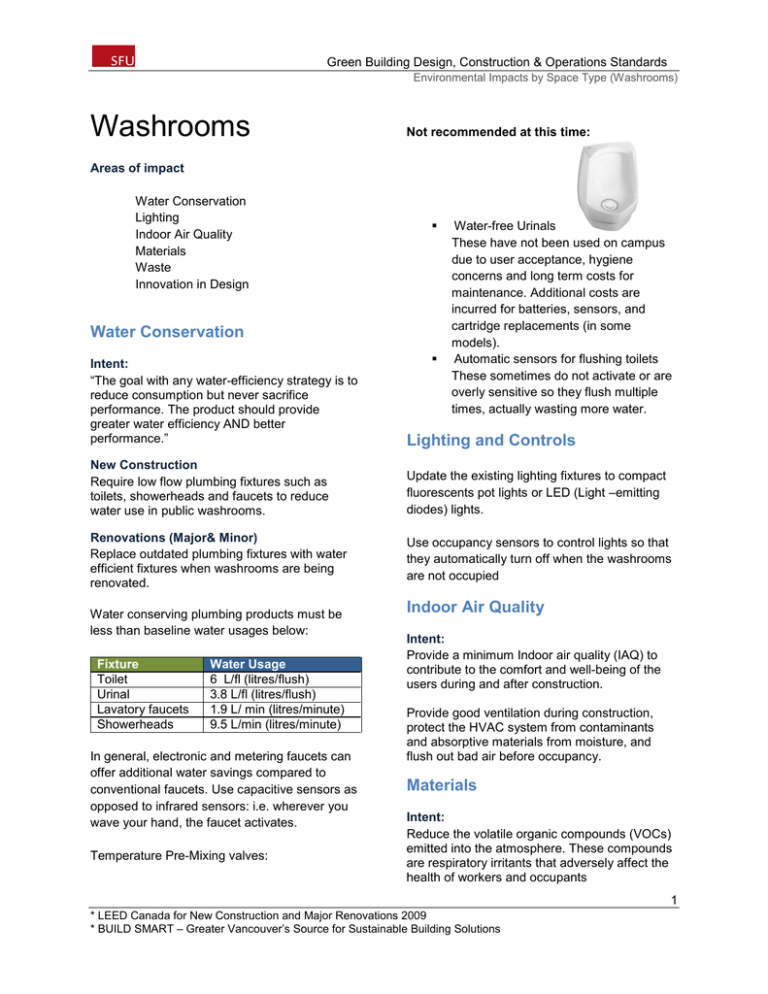
Green Building Design, Construction & Operations Standards Environmental Impacts by Space Type (Washrooms) Washrooms Not recommended at this time: Areas of impact Water Conservation Lighting Indoor Air Quality Materials Waste Innovation in Design Water Conservation Water-free Urinals These have not been used on campus due to user acceptance, hygiene concerns and long term costs for maintenance. Additional costs are incurred for batteries, sensors, and cartridge replacements (in some models). Automatic sensors for flushing toilets These sometimes do not activate or are overly sensitive so they flush multiple times, actually wasting more water. Intent: “The goal with any water-efficiency strategy is to reduce consumption but never sacrifice performance. The product should provide greater water efficiency AND better performance.” Lighting and Controls New Construction Require low flow plumbing fixtures such as toilets, showerheads and faucets to reduce water use in public washrooms. Update the existing lighting fixtures to compact fluorescents pot lights or LED (Light –emitting diodes) lights. Renovations (Major& Minor) Replace outdated plumbing fixtures with water efficient fixtures when washrooms are being renovated. Use occupancy sensors to control lights so that they automatically turn off when the washrooms are not occupied Water conserving plumbing products must be less than baseline water usages below: Fixture Toilet Urinal Lavatory faucets Showerheads Water Usage 6 L/fl (litres/flush) 3.8 L/fl (litres/flush) 1.9 L/ min (litres/minute) 9.5 L/min (litres/minute) In general, electronic and metering faucets can offer additional water savings compared to conventional faucets. Use capacitive sensors as opposed to infrared sensors: i.e. wherever you wave your hand, the faucet activates. Temperature Pre-Mixing valves: Indoor Air Quality Intent: Provide a minimum Indoor air quality (IAQ) to contribute to the comfort and well-being of the users during and after construction. Provide good ventilation during construction, protect the HVAC system from contaminants and absorptive materials from moisture, and flush out bad air before occupancy. Materials Intent: Reduce the volatile organic compounds (VOCs) emitted into the atmosphere. These compounds are respiratory irritants that adversely affect the health of workers and occupants 1 * LEED Canada for New Construction and Major Renovations 2009 * BUILD SMART – Greater Vancouver’s Source for Sustainable Building Solutions Green Building Design, Construction & Operations Standards Environmental Impacts by Space Type (Washrooms) Innovation in Design When painting drywall surfaces (e.g. ceilings and walls), use low VOC emitting building materials, glues, adhesives, paints and lacquers. Limit VOCs in new materials, adhesives, sealants, paints and coatings. Choose high post-consumer recycled content materials & increase the use of products that are manufactured within the region. Use mold-resistant gypsum board and cement board in water-sensitive locations. Washroom accessories - Roll paper towel dispensers are supplied by the paper manufacturer and the dispensers can be obtained from Facilities Services. The paper purchased has high post consumer recycled content and can also be further recycled after use. - Soap dispensers: do not use the under-counter mount type. - Electric hand dryers: Where provided, electric hand dryers are often not used, and noisy. Intent: Door-less entrances prevent the spread of disease and deter vandalism; fewer audible clues to another person entering may discourage some vandals. Provide door-less entries to washrooms Other Other possibilities for innovation include rain water capture for toilet flushing; gray water capture (from hand washing) reused for landscape watering (“purple pipe”) but require caution and discussion with Health and code officials. Resources Green Labeling and Certifications: Adhesives – South Coast Air Quality Management District Rule #1168 • Sealants – Bay Area Air Resources Board Reg. 8, Rule 51 Go to the Metro Vancouver Green Guide Product to get further material resources. Waste Intent: Reduce waste by separated out used paper towels for recycling rather than being disposed of as garbage. • Paints and coatings – Green Seal GS 11 & GC-03 • Carpet – Carpet and Rug Institute (CRI) Green Label Plus Hard surface flooring - Floor Score Provide a recycling container for used paper towels in a convenient location that should also be easily accessible for custodial staff collection. Provide a separate container for garbage also conveniently located. Contributions by: Wendy Lee, Sook Suh Last updated: 24 November 2011 2 * LEED Canada for New Construction and Major Renovations 2009 * BUILD SMART – Greater Vancouver’s Source for Sustainable Building Solutions
